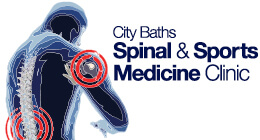Whether you’re working remotely or in an office setting, desk-related neck pain can be very uncomfortable.
But, with some simple strategies and exercises, you can alleviate your discomfort and prevent your tech neck from becoming a persistent issue.
Understanding desk-related neck pain:

Sitting at a desk for prolonged periods can lead to poor posture and strain on the neck muscles.
The most common causes include:
- Forward head posture: Leaning the head forward while working on a computer, or staring down at a phone or tablet, puts extra pressure on the muscles and joints of the neck. In this position, your neck is carrying much of the weight of your head, rather than being evenly distributed across your upper body.
- Hunched shoulders: Rounded shoulders and a slouched posture can contribute to neck pain by straining the upper back muscles, loading your chest muscles and, again, putting extra pressure on your neck muscles and joints.
- Lack of movement: Remaining in one position for too long can cause stiffness and tension in the neck and shoulders.
- Favouring one side for phone calls: If you regularly take phone calls and tuck your mobile or handset between your ear and shoulder, you could be straining your neck!
Our tips for relieving and preventing desk-related neck pain:
- Adjust your workspace: Make ergonomic adjustments to your office setup to reduce strain on your neck and shoulders. This may include using a supportive chair or cushion, adjusting the height of your monitor, and using a headset or speakerphone for phone calls.
- Maintain proper posture: Sit up straight with your shoulders relaxed and your back supported by your chair. Keep your computer screen at eye-level to prevent the need to crane your neck forward. For our tips on workplace ergonomics, setting up your workspace, and correct posture, check out our blog, which covers all of this in detail.
- Practice neck exercises and stretches: Incorporate simple neck exercises into your daily routine to strengthen the muscles and improve flexibility. Chin tucks are a fantastic exercise for this purpose. Perform them by tucking your chin gently towards your chest, hold for a few seconds before repeating up to 10 times. Follow this by gently tilting your head to one side, slowing lowering your ear towards your shoulder, holding for 15-30 seconds and repeating on the other side.
- Take regular breaks: Set a timer to remind yourself to take short breaks ever 30 minutes. Use these breaks to stretch and move around, allowing your muscles to relax and preventing stiffness. For more exercises you can perform without having to leave your desk, see this Instagram video from our physio, Aki.



When to seek professional help?

If your neck pain persists, despite these self-care measures, or if you experience numbness, tingling, or weakness in your arms or hands, it’s important to seek advice from a physiotherapist or healthcare professional as soon as you are able.
The team at City Baths Spinal and Sports Medicine Clinic can provide you with treatment and exercises to address your specific needs and help you find relief from your neck pain.
Remember, prevention is key when it comes to desk-related neck pain. By incorporating these tips into your daily routine, and being mindful of your posture and movements, you can reduce discomfort and improve your overall well-being.
Here’s to a happy, healthy neck!
Are you struggling with neck pain while trying to work or study?
Our physio team can assess your neck pain and provide you with advice and treatment to address its cause/causes, relieving discomfort and preventing soreness or stiffness from recurring.
Join our socials community!
Stay up to date with our opening hours, blog articles and other clinic news. Find handy tips from our physios to help you make the most of your home-rehab!

